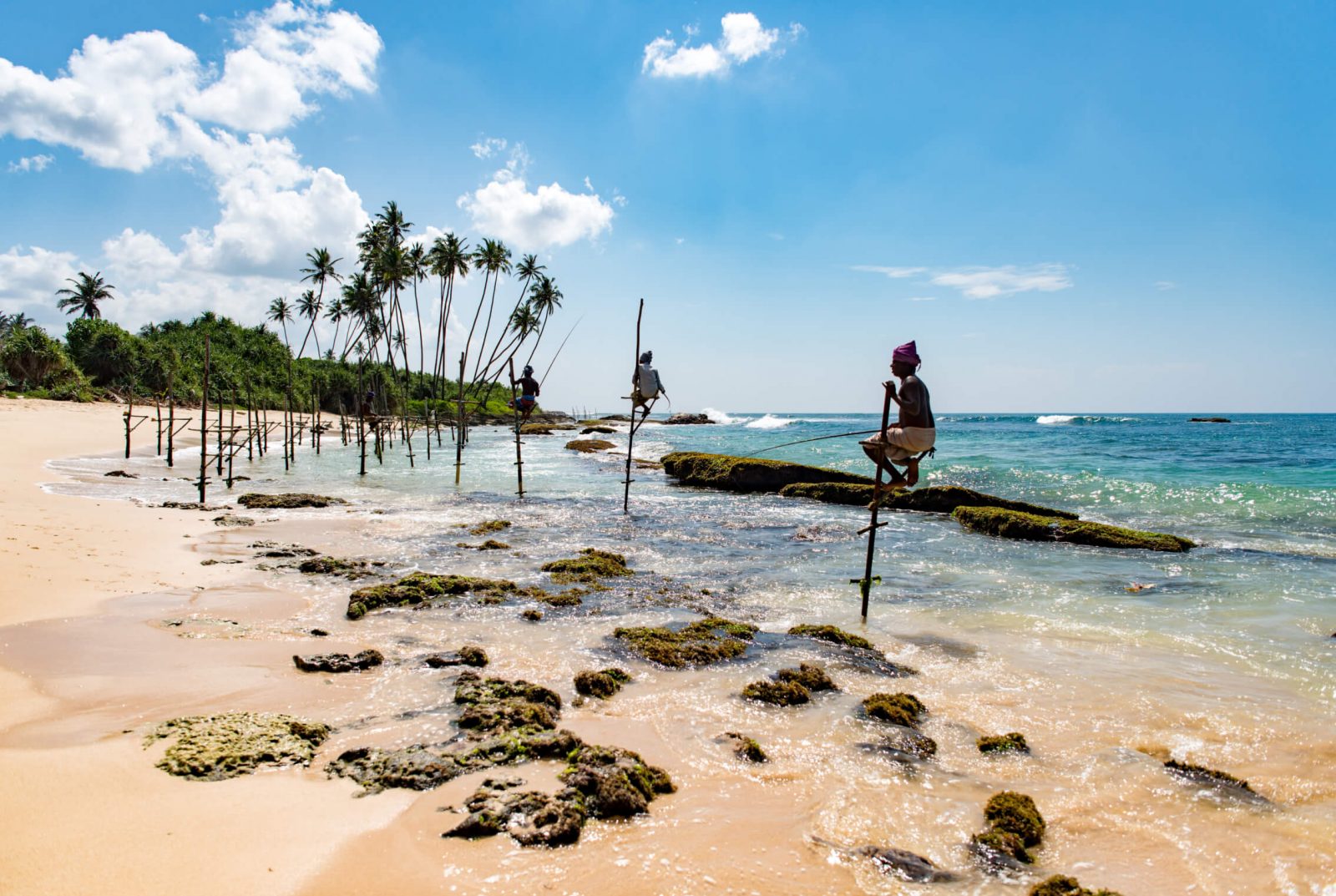“Maalu Waadi” are fishing villages that are active during the six months of optimal fishing season in every coastline of Sri Lanka. Fishermen from across the country travel to these villages and set up temporary homes. Some travel with families while some are alone. Early mornings on the south coast of Sri Lanka is the ideal time to see fishermen landing their catch.
Every evening or early morning, fishermen go out to sea and fix fishing hooks at different locations and when they return, there’s enough fish collected near the hooks. Some men focus only on collecting larger fish such as lobsters and tuna, which are sold based on its weight. For this, they go out to sea at nights and throw some nets in which the lobsters get collected. In the early morning hours, these fishermen return to sea, find their nets and pick up those entangled lobsters.
The sea shores begin to fill up with boats as the sun comes up and the last of the fishermen return ashore with their final early morning catch. Every time a boat approaches, there is a shout out and a group of men who are standing on the beach help with pulling the net ashore. Sometimes this process takes about an hour, even with a group of about 10-15 men working hard.
Most villages and towns have a fish market but fishermen end up selling some of their stock on the sea shores to early birds (such as restaurant owners and local merchants) who come searching for freshest fish from their direct sources. Apart from lobsters and tuna, red mullet, ranna, handaya, para maalu are some Sri Lankan fish that are brought ashore, categorized into groups of varieties, and sold to the public.
A ‘Mudalali’ is what these fishermen refer to as their boss. A group of fishermen have a main Mudalali who they work for. Every day’s catch is loaded into his truck which is full of ice boxes to store the fish. Some of these trucks head to the fish market while some head straight to the airport for exporting.
Because fisherfolk are from different parts of the country, they share different beliefs, cultures and ways of doing things. Some do not cook their own catch and some do not eat their own catch. Those who are fishing for a living are always on the move, from coast to coast, depending on the changes in currents and wind. With experience they can determine changes in tide and ways of the sea. When they want to move locations, they hire a truck to transport their boats (made of coconut leaves) and all other furniture and equipment.
When the sun becomes harsher, fishermen return to their home to mend nets, rest and spend time with families. Because of the dangers that they face every day on their venture to sea, the men of the families are regarded with great respect.
For tourists interested in learning more about a fishermen’s tale, guided tours can be organized. The traditional industry of fishing still supports many families in Sri Lanka. Here are some facts about the fishing industry in Sri Lanka:
- Sri Lanka has 52 government approved fishing and processing facilities.
- The fisheries sector generates about 2.4 million direct or indirect jobs.
- Fish is the primary source of protein for 2.5 million people residing in coastal areas.
- Fish provides 50% of the animal protein requirement in Sri Lanka.
- As of 2016, the fishing industry accounts for 1.6% of GNP.

